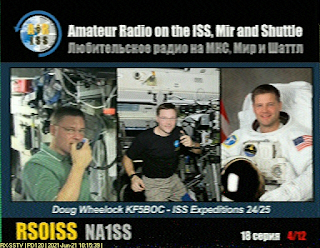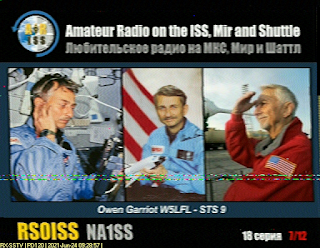An ARISS (Amateur Radio on the International Space Station) SSTV (Slow Scan Television) event occurred between the 26th December 2021 at approximately 18:25 UTC and 31st December 2021 at approximately 17:05 UTC.
Images are downlinked at 145.800 MHz +/- 3 KHz for Doppler shift and the expected SSTV mode of operation is PD 120.
The main theme will be for this event was 'lunar exploration' and, as always, there were some excellently designed images.
I use the Nooelec SMART IV RTL-SDR software defined radio receiver and an i7 laptop for receiving, with HDSDR and RXSSTV. I use a 120 degree folded dipole for picking up the signals.
The antenna is inside my flat and at ceiling level in my living room ... not in the loft!
These images have artefacts partly due to the antenna being indoors but, on this occasion, the weather has been poor with considerable signal degradation due to the wet roof tiles and probable rain static.
I made a virtual display card for the 11 out of the 12 images in total.
Click on the images to see them full size! 😉



















































